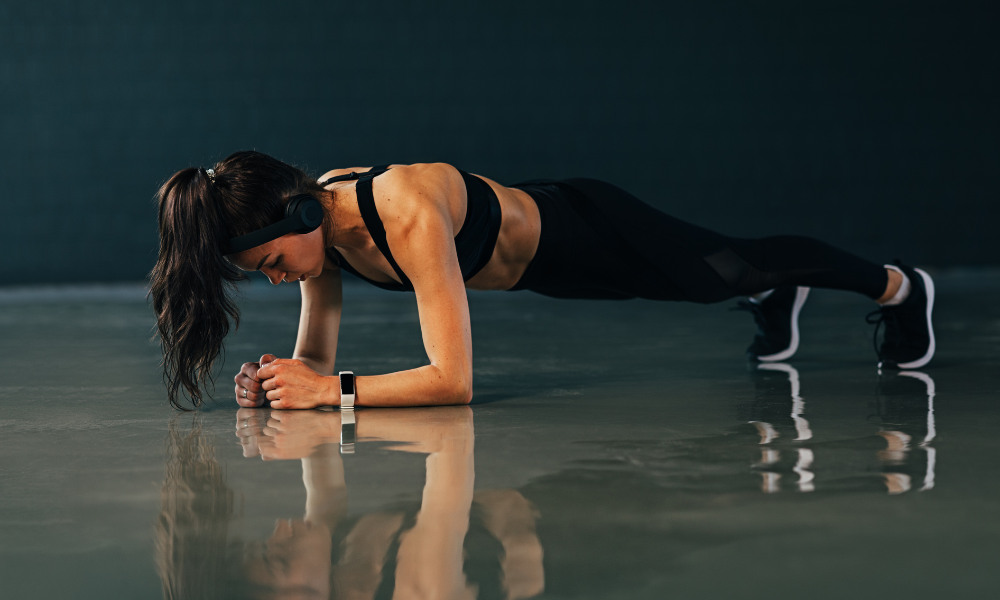What Is A Plank Exercise?

Plank exercise, a cornerstone of fitness routines, is a highly effective way to engage multiple muscle groups simultaneously.
This simple yet challenging move is renowned for its ability to strengthen the core and enhance overall body stability.
In this article, we'll delve into the benefits, proper form, variations, common mistakes, and more, helping you understand why the plank exercise should be a fundamental part of your fitness regimen.
Benefits of Plank Exercise
Engaging in regular plank exercises offers a multitude of benefits.
From sculpting a strong core and improving posture to boosting metabolism and preventing back pain, the advantages are extensive.
Additionally, planks engage muscles in the arms, shoulders, back, and legs, providing a full-body workout with just one exercise.
Proper Plank Form
To maximize the benefits and minimize the risk of injury, mastering the correct plank form is crucial.
Begin by aligning your body in a straight line from head to heels.
Engage your core muscles, avoid arching your back, and ensure your hips aren't sagging.
Distribute weight evenly between your forearms and toes, and maintain steady breathing throughout the exercise.
Variations of Plank Exercise
Variety is key to preventing workout plateaus and targeting different muscle groups.
Incorporate side planks, forearm planks, and high planks to challenge your body from various angles.
These variations intensify the engagement of obliques, shoulders, and even leg muscles, providing a comprehensive workout experience.
Incorporating Planks into Your Routine
Whether you're a beginner or an advanced fitness enthusiast, planks can fit into your routine.
Allocate a few minutes for planks after your regular workout or designate specific days for core-focused training.
Consistency is key, so start with shorter holds and gradually increase the duration as your strength improves.
Common Mistakes to Avoid
Executing planks incorrectly can lead to ineffective results or even injuries.
Avoid overarching your lower back, dropping your hips, or allowing your head to hang.
Keeping a neutral spine and engaging your core will help you avoid these pitfalls and ensure a safe and effective plank exercise.
How Long Should You Hold a Plank?
The duration of a plank hold varies based on your fitness level.
Beginners may start with 20-30 seconds and progress from there.
Advanced practitioners can aim for 1-2 minutes per set.
Quality matters more than quantity, so focus on maintaining proper form throughout your plank.
Is the Plank Exercise Effective for Everyone?
Absolutely! Planks are versatile and can be modified to suit different fitness levels.
However, individuals with existing shoulder or back issues should consult a fitness professional before incorporating planks into their routine.
With the right modifications and guidance, almost anyone can benefit from this exercise.
Tips for Progression
Once you've mastered the basic plank, challenge yourself by increasing the difficulty level.
Introduce stability balls, resistance bands, or weighted vests to intensify the exercise.
These variations engage additional muscles and provide a continuous challenge for your body.
Importance of Consistency
Consistency is the cornerstone of fitness progress.
Include planks in your routine a few times a week to experience visible improvements in core strength, stability, and overall fitness.
Consistent effort yields the best results over time.
Enhancing Core Strength with Planks
Planks specifically target the transverse abdominis and rectus abdominis muscles, enhancing core strength and stability.
A strong core contributes to better posture, reduced risk of injury, and improved athletic performance.
Myth Debunked: Planks vs. Sit-ups
Contrary to popular belief, planks are often more effective than traditional sit-ups for building core strength.
Sit-ups can strain the neck and lower back, while planks engage multiple muscles without the risk of overuse injuries.
Planks and Posture Improvement
In the digital age, poor posture is increasingly common.
Planks help counteract the negative effects of prolonged sitting and screen time by strengthening muscles that support proper posture.
Incorporating planks into your routine can lead to better spinal alignment and reduced discomfort.
Adding Planks to Home Workouts
You don't need a gym to benefit from planks.
They can be easily incorporated into home workouts.
With minimal space and no equipment required, planks offer a practical way to maintain your fitness regimen anywhere, anytime.
Conclusion
The plank exercise is a dynamic and effective workout that offers a plethora of benefits.
From building a strong core and improving posture to engaging multiple muscle groups, planks are a versatile and accessible addition to any fitness routine.
FAQs
Are planks suitable for beginners?
Absolutely! Start with shorter holds and progress gradually to avoid strain.
Can I do planks every day?
It's better to give your muscles time to recover. Aim for a few times a week.
Do planks help reduce belly fat?
Planks contribute to overall fat loss, but spot reduction isn't effective. A balanced diet and regular exercise are key.
What's the difference between a high plank and a forearm plank?
A high plank is done on your palms, while a forearm plank is on your forearms. Both engage different muscle groups.
Can planks cause back pain?
When done with proper form, planks shouldn't cause back pain. If you experience discomfort, reassess your form or consult a professional.
